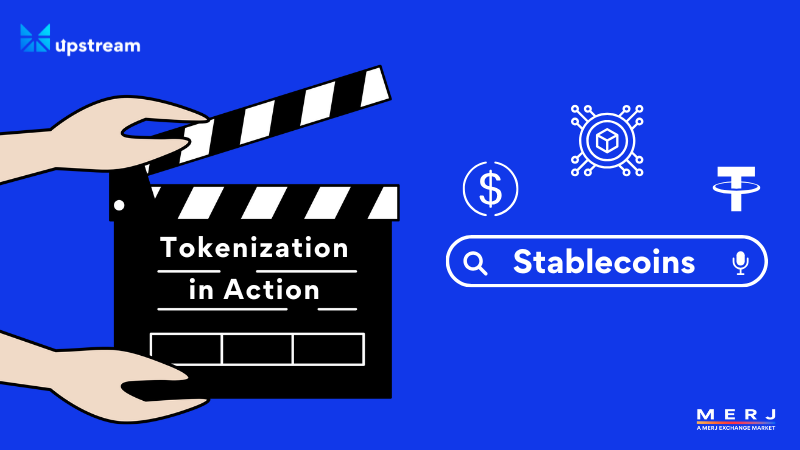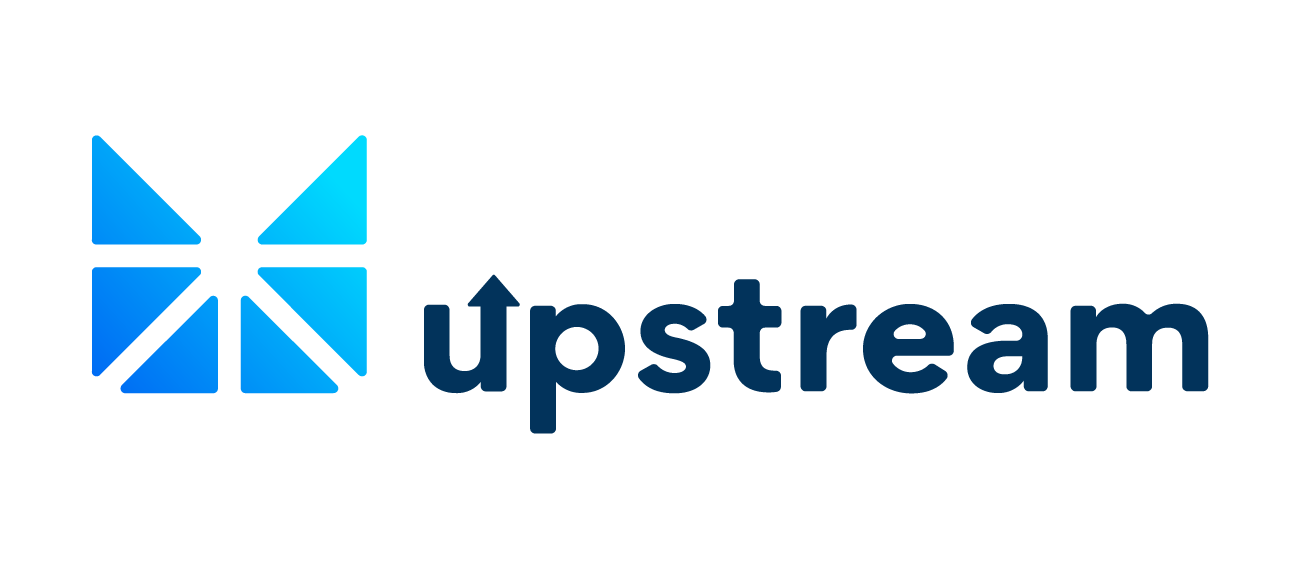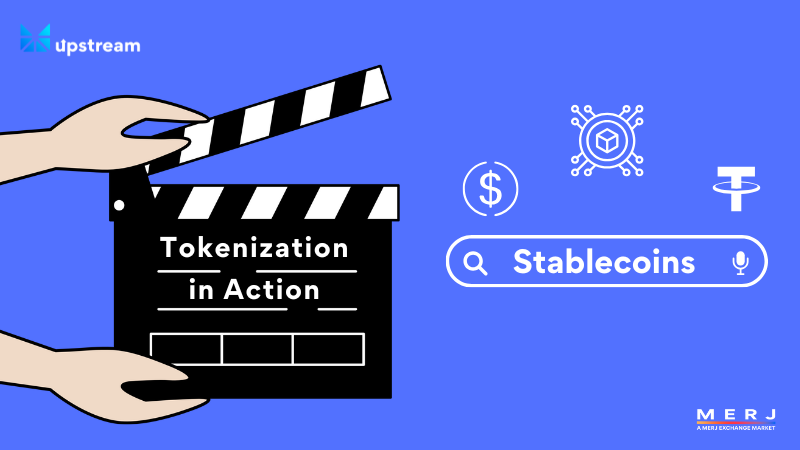
What are stablecoins and how are major companies implementing them today?
By Vanessa Malone
Stablecoins are one of the most widely used applications of tokenization today. Tokenization turns assets into digital representations for quicker and more efficient transactions. For stablecoins, this means tying their value 1:1 to a traditional currency like the U.S. dollar, ensuring stability while benefiting from more seamless movement across global markets.
Major financial institutions and fintech leaders are integrating stablecoins into their operations, from cross-border payments to institutional settlements. Companies like PayPal, Visa, JP Morgan, and even government entities are actively using and investing in the technology. Upstream, a MERJ market and global stock trading app, also leverages stablecoins, allowing users to fund their accounts with USDC and USDT for streamlined trading. Let’s dive into how other industry giants are leveraging stablecoins today.
PayPal
PayPal launched their own stablecoin called PayPal USD (PYUSD) in August 2023. As of February 2025, it’s market cap hovers around $588 million.¹ The stablecoin is designed for everyday payments, allowing PayPal users to send, receive, and convert it seamlessly within the platform. Users can also send to Ethereum and Solana wallet addresses that accept PYUSD. Jose Fernandez da Ponte, PayPal’s SVP of Blockchain, Crypto and Digital Currencies stated “stablecoins will help revolutionize commerce globally with faster, cheaper, programmable money movement.”²
Visa
Companies like Visa have partnered with Circle and USDC for global payments and settlements. USDC, a stablecoin pegged to the U.S. dollar with a market cap of $56 billion,³ is increasingly being used for instant and cost-effective cross-border transactions. This can be especially valuable for businesses that need to send payments quickly and securely without any delays and fees that can be associated with traditional banking systems. In October 2024, USDC announced its integration into Brazil and Mexico’s banking systems, streamlining accessibility to exchange Brazilian reais and Mexican pesos for USD-pegged stablecoin through local financial institutions.
JP Morgan
In February 2019, JP Morgan introduced JPM Coin, a tokenized bank deposit used by institutional clients for real-time cross-border payments and wholesale settlements. The goal was to improve liquidity efficiency for its institutional clients. At the end of 2024, JP Morgan rebranded Onyx, one of the first bank-operated blockchains, into Kinexys Digital Payments, and plans to introduce on-chain, automated foreign exchange capabilities in 2025.⁴
The Bank of England
The Bank of England recently announced plans to explore a central bank digital currency (CBDC) and set up a Digital Securities Sandbox (DSS) in partnership with the Financial Conduct Authority (FCA). This initiative provides financial institutions with a regulated environment to experiment with issuing and trading tokenized assets, including stablecoins, paving the way for broader adoption of digital currencies in the financial ecosystem.⁵
United States of America
In January 2025, President Trump issued an executive order emphasizing stablecoins as a key tool for maintaining the U.S. dollar’s global dominance and ensuring financial stability. The order highlights the importance of stablecoins in the evolving digital finance landscape, positioning them as a preferred mechanism to support both the U.S. economy and global financial systems. The executive action points to the government’s focus on integrating stablecoin technology to enhance digital financial infrastructure.⁶
Conclusion
The involvement of major companies in stablecoins is a crucial step toward widespread adoption and understanding of tokenization technology. As these industry giants integrate stablecoins into their operations, they help to demystify the technology, and create new opportunities for efficient transactions. With increased use across sectors, stablecoins are poised to play a significant role in the future of digital payments and financial systems.
Stay connected to hear about upcoming opportunities for traders on Upstream. Issuers interested in listing on Upstream can get started here. Investors (non-U.S.) can download Upstream on iOS or Android.
Sources
1 CoinGecko 2 LinkedIn 3 CoinDesk 4 JP Morgan 5 Bank of England 6 Whitehouse.gov
Disclaimers:
U.S. persons may not deposit, buy, or sell securities on Upstream. Anyone may buy and sell Collectibles on Upstream.
This communication shall not constitute an offer to sell securities or the solicitation of an offer to buy securities in any jurisdiction where such offer or solicitation is not permitted. Collectibles have no royalties, equity ownership, or dividends. Collectibles are for utility, collection, redemption, or display purposes only. Anyone may buy and sell Collectibles on Upstream. All orders for sale are non-solicited by Upstream and a user’s decision to trade securities must be based on their own investment judgment.
Upstream is a MERJ Exchange market. MERJ Exchange is a licensed Securities Exchange, an affiliate of the World Federation of Exchanges, a National Numbering Agency, and a member of ANNA. MERJ is regulated in the Seychelles by the Financial Services Authority, https://fsaseychelles.sc/, an associate member of the International Association of Securities Commissions (IOSCO). MERJ supports global issuers of traditional and digital securities through the entire asset life cycle from issuance to trading, clearing, settlement, and registry. It operates a fair and transparent marketplace in line with international best practices and principles of operations of financial markets. Upstream does not endorse or recommend any public or private securities bought or sold on its app. Upstream does not offer investment advice or recommendations of any kind. All services offered by Upstream are intended for self-directed clients who make their own investment decisions without aid or assistance from Upstream. All customers are subject to the rules and regulations of their jurisdiction. By accessing the site or app, you agree to be bound by its terms of use and privacy policy. Company and security listings on Upstream are only suitable for investors who are familiar with and willing to accept the high risk associated with speculative investments, often in early and development-stage companies. U.S. persons may not deposit, buy, or sell securities on Upstream. There can be no assurance the valuation of any particular company’s securities is accurate or in agreement with the market or industry comparative valuations. Investors must be able to afford market volatility and afford the loss of their investment. Companies listed on Upstream are subject to significant ongoing corporate obligations including, but not limited to disclosure, filings, and notification requirements, as well as compliance with applicable quantitative and qualitative listing standards.
Collectible products are akin to a digital sticker of an underlying artwork and should not be considered a financial investment; a security token, an e-money token, or a form of digital currency. Collectibles should not, therefore, be purchased by anyone seeking financial gain or with an expectation to profit from the purchase, ownership in the entity, dividends or distributions, sale or resale of a Collectible. By buying a Collectible, you agree that you are not doing so for investment purposes or for the purposes of obtaining a security or an appreciating asset. You understand that the benefit you receive for buying a Collectible is limited to supporting athletes, celebrities and other brands. You also acknowledge that ownership of a Collectible does not carry with it any rights, express or implied, including (without limitation) copyright, trademarks or other intellectual property or proprietary rights in and to the underlying artwork. The copyright to the digital artwork remains with the copyright holder.
Forward-Looking Statements
This communication contains “forward-looking statements.” Such statements may be preceded by the words “intends,” “may,” “will,” “plans,” “expects,” “anticipates,” “projects,” “predicts,” “estimates,” “aims,” “believes,” “hopes,” “potential,” or similar words. Forward-looking statements are not guarantees of future performance, are based on certain assumptions, and are subject to various known and unknown risks and uncertainties, many of which are beyond the Company’s control, and cannot be predicted or quantified, and, consequently, actual results may differ materially from those expressed or implied by such forward-looking statements. Such risks and uncertainties include, without limitation, risks and uncertainties associated with (i) difficulties in obtaining financing on commercially reasonable terms; (ii) changes in the size and nature of our competition; (iii) loss of one or more key executives or brand ambassadors; and (iv) changes in legal or regulatory requirements in the markets in which we operate. The Company assumes no obligation to publicly update or revise its forward-looking statements as a result of new information, future events or otherwise.

